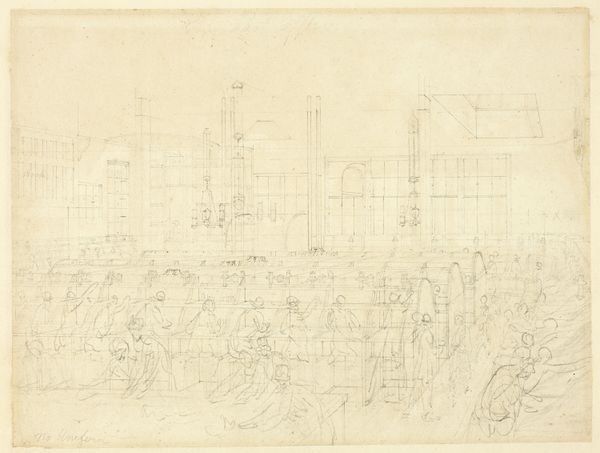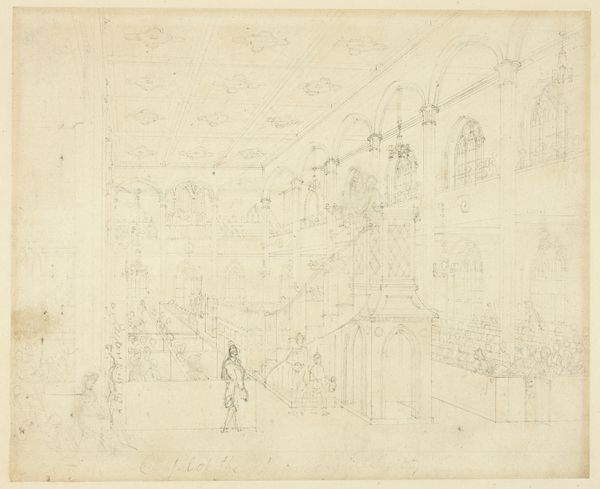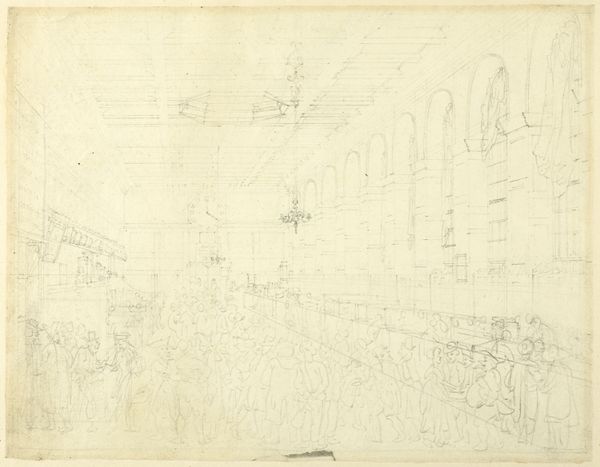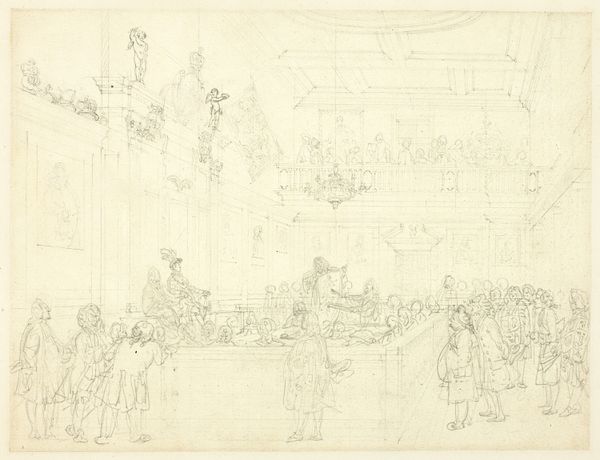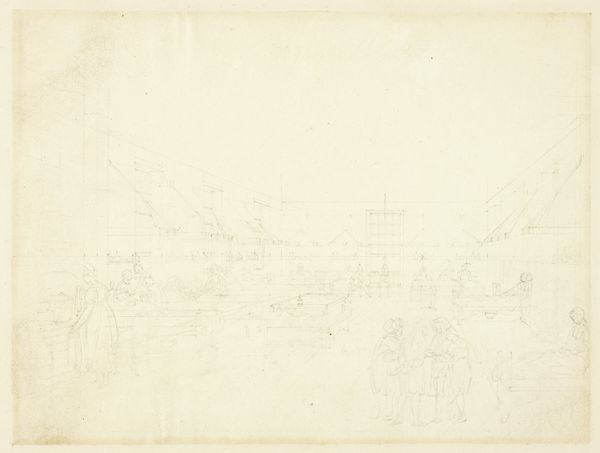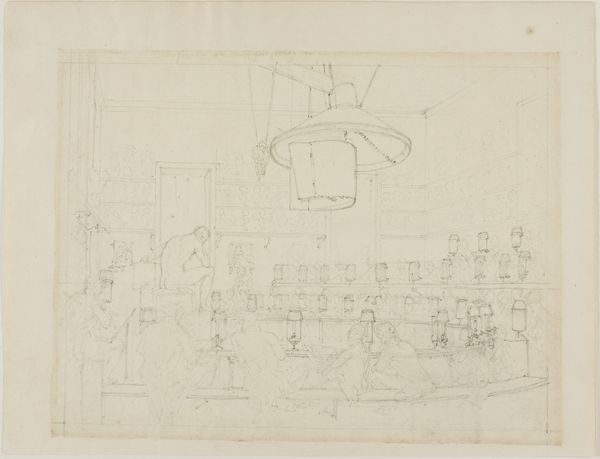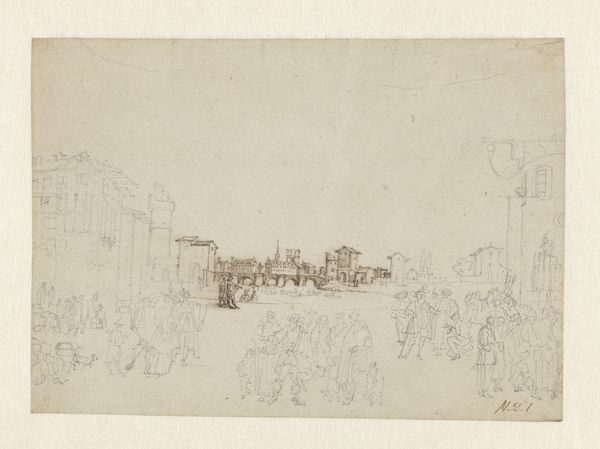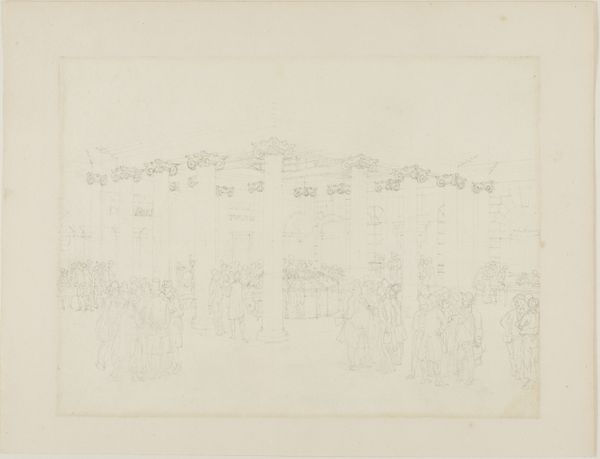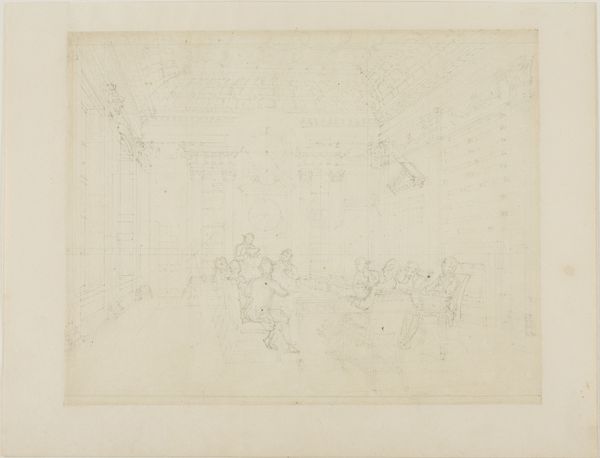
Study for Exhibition of Water Colored Drawings, Old Bond Steet, from Microcosm of London c. 1808
0:00
0:00
drawing, print, etching, paper, graphite
#
drawing
# print
#
etching
#
etching
#
paper
#
graphite
#
cityscape
#
history-painting
#
academic-art
Dimensions: 197 × 260 mm
Copyright: Public Domain
Curator: My first impression is that this piece feels unfinished, delicate, like a ghost of a moment. Editor: Indeed, it has that quality. What we’re seeing here is Augustus Charles Pugin's "Study for Exhibition of Water Colored Drawings, Old Bond Street, from Microcosm of London," dating back to around 1808. It's a print made from etching and graphite on paper and resides here at the Art Institute of Chicago. Curator: The architectural structure feels cavernous, almost church-like. Yet it’s filled with the clamor of people viewing artwork – a temple to art perhaps? It makes me consider how spaces dictate behavior and shape our perception. Editor: Precisely. The Microcosm of London was meant to capture everyday life, especially the social activity centered on institutions and new types of commerce and leisure that came to define early 19th-century London. By showing this watercolor exhibition on Old Bond Street, Pugin underscores how seeing and being seen became central to upper-class identity and commerce. Curator: You know, observing these sketches, I see archetypes emerging. The figures clustered around particular paintings might be surrogates for critical appraisal, but also human connection, that happens within shared aesthetic experience. Editor: Yes, this bustling interior points to the commercialization of art through public displays. Notice the arrangement of paintings densely packed, visually competing for attention, suggesting that the art world in London was rapidly evolving under commercial interests and changing consumption habits. Curator: Do you think he purposefully omitted details? I mean, the haziness feels strategic. Like memory itself – present, yet always fading. Editor: Maybe, maybe not. In some ways, the sketch aesthetic actually enhances the feeling of peering into a vibrant social space without overwhelming us. We grasp the dynamics of art consumption within the social fabric, without being distracted by unnecessary details. Curator: Well, whatever the intent, this piece encourages meditation on the layers of perception: what we choose to see, what's truly present, and the stories embedded in every glimpse. Editor: A great point. Pugin's "Study" reminds us that observing art is also an act of cultural participation and reveals the political economy of image-making during a pivotal time in London.
Comments
No comments
Be the first to comment and join the conversation on the ultimate creative platform.
